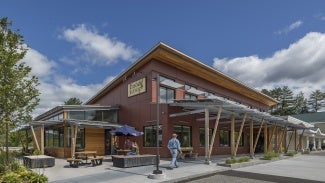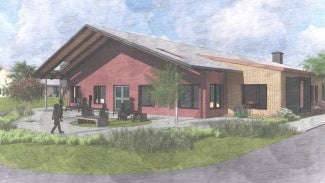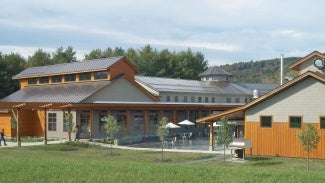
Using the porch to connect people to place
Porches can also have health and wellness benefits.
People spend too much time indoors. In fact, the Environmental Protection Agency says that on average, Americans spend 90% of their time inside. Indoor pollutants can create poor indoor air quality, while fewer pollutants are often found outside. Additionally, spending time outside and in nature can help reduce stress, improve cognition, and improve confidence among other benefits, according to UC Davis Health.
The porch can be the connection from the inside of the building to the outdoors, the place that connects us to the environment. In the northeast, where my architectural design studio gbArchitecture is located, utilizing a porch in design allows for additional time outside to relax, socialize, work, study or hang out with friends or family even if it is raining, snowing, or just too hot to be in the sun. It often inspires people to spend a little more time outside watching and listening to the surroundings. The porch is also a low-cost solution for adding additional square footage to a project. Ultimately, the porch provides an opportunity to be outdoors longer, and when we talk about health and wellness, views, and access to daylight and fresh air, adding a porch to a design could make a difference.
At our design studio, we work on community-based projects: schools, affordable housing, food coops, libraries, and community buildings. We don’t see the porch as being reserved exclusively for single family homes. In fact, creating a porch in a project is an exciting opportunity to explore the space that connects the inside to the outside, and the implementation can vary greatly in scale.
Over the years, I have utilized porches in much of my work, and am always delighted to see how the porch is used once the project is built. Here are a few examples of how porches can forge a connection between indoors and outside.

Littleton Food Co-op, Littleton, New Hampshire
The porches are used here to create a pedestrian zone that was originally a path for vehicles to access the parking area. We created two porches that create an outdoor market and an entry porch, which provides a social place for sales as well as slowing traffic down. The connection to the outdoors is reflective of the food co-op and its mission.

Wentworth Community Housing, White River Junction, Vermont
The porch is used here as a front stoop to see people coming and going to and from the neighborhood. This front stoop is a social space and is intended to encourage people to provide eyes on the street for safety.

Millers Run School, Kingdom East School District, Vermont
The porch is used here as an outdoor classroom. We are often asked to provide outdoor pavilions for schools, but extending the roof is a simple solution to add additional classroom space to the building. It is also connected to the classroom, which helps with monitoring students who are working independently. This project is under design now.

King Arthur Baking Company, Norwich, Vermont
The porch shown here brought together three separate entities (baking, retail and baking education) and tied them together through one shared courtyard surrounded by a porch. This porch is busy in every season and provides ample seating for people to eat and socialize. The porch provides a much-needed gathering space for all three business sectors.
Diantha Korzun, AIA, is a principal at gbArchitecture in Burlington, Vt., and a member of AIA's Strategic Council and the AIA Committee for Climate Action and Design Excellence (CCADE).
